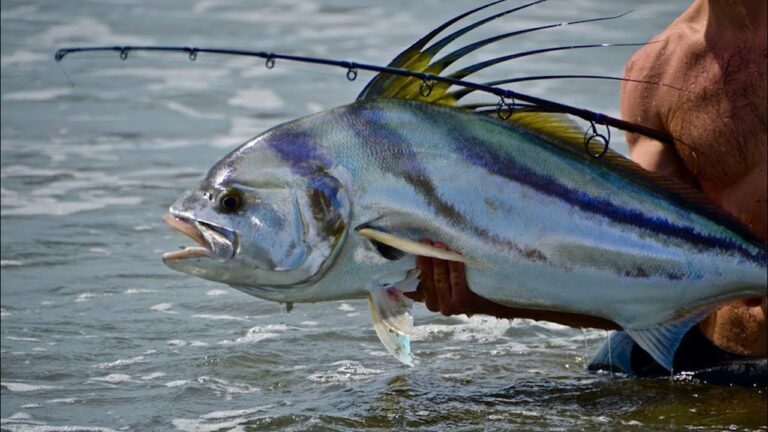Choosing The Best Sit In Vs Sit On Top Kayak: A Comparative Guide
Want to try kayaking? Choosing the right kayak is important for a comfortable adventure. Beginners often struggle with deciding between a sit-in or sit-on-top kayak. Let’s explore the differences and benefits of each to help you make an informed decision. Ready to begin? Let’s go!
Sit In vs Sit On Top Kayaks: Exploring the Key Differences
When choosing a kayak, deciding between a sit-in or sit-on-top kayak is important. Both have pros and cons, so understanding the differences will help you make the right choice. This article will explore the features, benefits, and considerations of each type, helping you find the perfect kayak for your needs.
Section 1: Sit-In Kayaks
Sit-in kayaks, as the name suggests, involve sitting inside the kayak’s cockpit with your legs comfortably positioned inside the hull. Let’s explore the key features and benefits of sit-in kayaks:
Design and Construction:
Sit-in kayaks are designed to be sleeker and have a closed cockpit, providing improved protection from the elements.
They are built with a lower center of gravity, which increases stability, particularly in rough waters. The enclosed cockpit also offers better control for experienced paddlers.
Performance:
Sit-in kayaks excel in speed, maneuverability, and tracking. Their lower center of gravity and the ability to use their lower body while paddling leads to improved efficiency and stronger strokes.
Because of this, sit-in kayaks are popular for touring, long-distance paddling, and navigating difficult waters.
Protection and Warmth:
Sit-in kayaks have an enclosed cockpit that offers enhanced protection against wind, spray, and cold water, making them ideal for paddling in colder climates or during cooler seasons.
You can also add a spray skirt to create a watertight seal around the cockpit, keeping you even drier.
Section 2: Sit-On-Top Kayaks
Sit-on-top kayaks are designed with an open deck, allowing you to sit on top of the kayak rather than inside a cockpit. Let’s explore the key features and benefits of sit-on-top kayaks:
Ease of Use and Accessibility:
Sit-on-top kayaks have an open design, which makes them very user-friendly. This is especially true for beginners or those with limited mobility.
Getting on and off the kayak is easy, and the lack of a cockpit allows for simple entry and exit. As a result, they are popular among recreational kayakers and families.
Stability:
Sit-on-top kayaks are stable and easy to use, making them great for beginners and offering versatility for activities like fishing, snorkeling, and photography.
They have a wide, buoyant hull design and an open deck for convenient gear storage and equipment access.
Self-Rescue and Safety:
Sit-on-top kayaks are easier to re-enter from the water in case of capsizing when compared to sit-in kayaks.
With no enclosed cockpit, it’s simple to climb back onto the kayak from the water. This makes sit-on-top kayaks a preferred choice for safety-conscious individuals or those who intend to kayak in rougher waters.
Drainage:
Sit-on-top kayaks have scupper holes or self-bailing systems to drain water through the hull.
This eliminates the need to manually pump out water from the cockpit, resulting in a dry and comfortable paddling experience in choppy or rough conditions.
Section 3: Considerations for Choosing the Right Kayak
When deciding between a sit-in kayak and a sit-on-top kayak, it’s essential to consider various factors that align with your preferences, intended use, and skill level. Here are some crucial considerations:
Primary Use:
Consider your intended use for the kayak. If speed, maneuverability, and advanced paddling skills are important to you, choose a sit-in kayak.
However, if you prefer recreational activities, fishing, or ease of use, a sit-on-top kayak is likely a better option.
Environment and Climate:
When considering water conditions, sit-in kayaks are more suitable for cold climates or rough waters that require protection from the elements.
On the other hand, sit-on-top kayaks are perfect for warm climates or calm waters as their open design allows for better ventilation.
Skill Level:
Your kayaking skill level is crucial. Sit-in kayaks demand more skill and experience for effective control.
If you’re a beginner or new to kayaking, a sit-on-top kayak is a forgiving and beginner-friendly choice.
Storage and Transportation:
Consider your storage and transportation requirements. Sit-in kayaks are more compact and easier to transport because of their streamlined design.
Sit-on-top kayaks, on the other hand, may need more storage space and specialized racks or trailers for transportation due to their larger size and open construction.
Faqs for Sit In Vs Sit On Top Kayak:
1. What are the differences between a sit-in and a sit-on-top kayak?
A sit-in kayak features a cockpit where the paddler sits inside the kayak, with their legs positioned beneath the deck.
This design provides more protection from the elements and allows for a drier ride.
In contrast, a sit-on-top kayak has an open-top deck, with the paddler sitting on a molded seat on top of the kayak.
This design offers more freedom of movement and easier entry and exit.
2. Which type of kayak is more suitable for beginners?
For beginners, a sit-on-top kayak is often recommended. The open deck design provides better stability and makes it easier to recover from a capsize.
Additionally, the sit-on-top kayak allows for easier entry and exit, making it more user-friendly, especially for those who are new to kayaking.
3. Which type of kayak is more suitable for fishing?
Both sit-in and sit-on-top kayaks can be suitable for fishing, but sit-on-top kayaks are generally the preferred choice for anglers.
The open deck design offers more space and freedom of movement, allowing for easier casting and reeling in the catch.
Sit-on-top kayaks also provide the option to attach fishing accessories, such as rod holders and fish finders, making them more versatile for fishing activities.
4. Are sit-in kayaks more suitable for colder weather conditions?
Yes, sit-in kayaks are more suitable for colder weather conditions. The enclosed cockpit design offers better protection from wind, water splashes, and chilly temperatures.
Some sit-in kayaks come with additional features like spray skirts or covers to further enhance insulation and keep the paddler warm and dry during colder outings.
5. Which type of kayak is better for recreational paddling?
Both sit-in and sit-on-top kayaks can be suitable for recreational paddling, depending on personal preferences.
Sit-in kayaks are often preferred by those who value a drier ride and want to paddle longer distances.
On the other hand, sit-on-top kayaks are popular among recreational paddlers who enjoy swimming, snorkeling, or simply relaxing on the water, as they offer easier access to the water and the option to jump off and climb back on the kayak.
6. Can you provide some examples of when to choose a sit-in kayak and when to choose a sit-on-top kayak?
If you plan to kayak in calm lakes or slow-moving rivers, a sit-in kayak may be a good choice as it offers better speed, efficiency, and protection from the elements.
Sit-in kayaks are also preferred for longer kayaking trips, as they allow for more gear storage.
Sit-on-top kayaks, on the other hand, are great for recreational paddling, fishing, swimming, and for those who prefer a more casual and relaxed kayaking experience.
Final Thoughts
In summary, when comparing sit in vs sit on top kayaks, both options have pros and cons. Sit-in kayaks offer protection from the elements and efficient paddling. Sit-on-top kayaks are versatile and easy to enter and exit.
Ultimately, the choice depends on personal preferences and specific needs. Considering the pros and cons is important when choosing a kayak for calm lakes or whitewater rafting.

